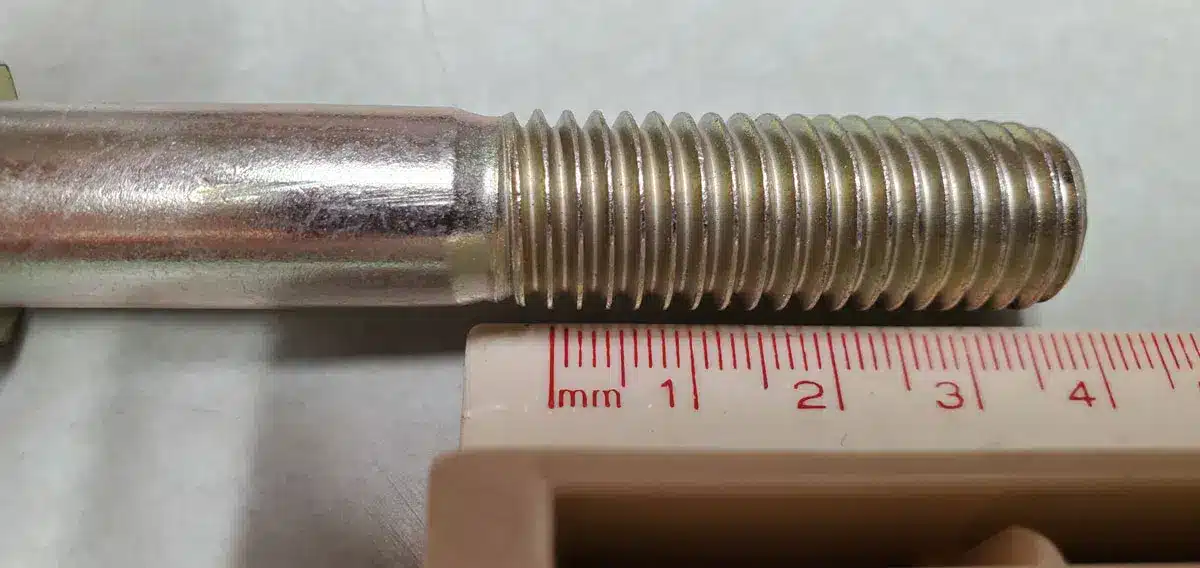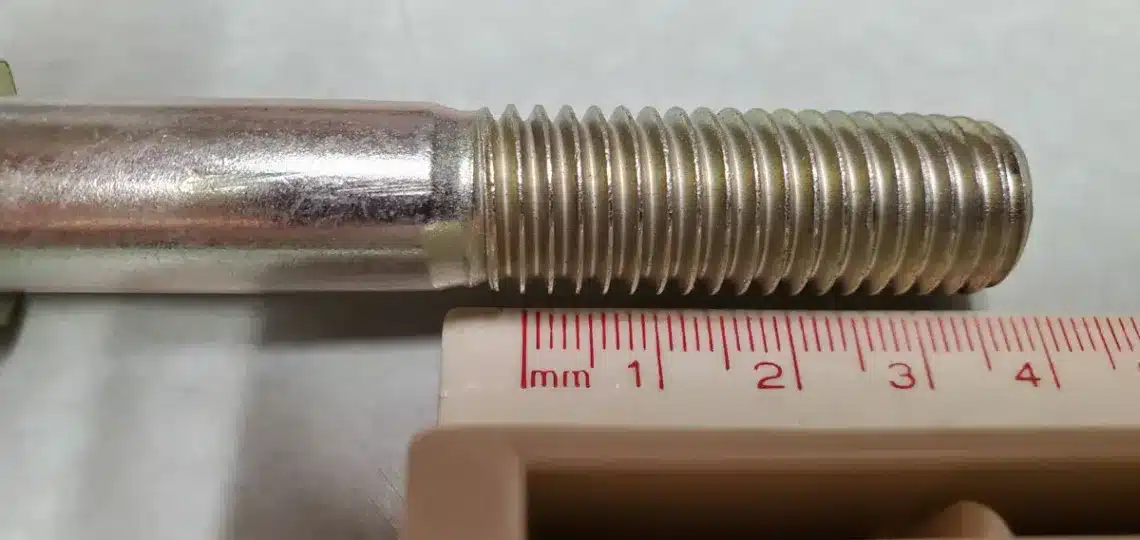Screws are externally threaded fasteners designed to be inserted into holes in assembled parts, mate with a preformed internal thread, or form their own thread. In most cases, different types of screws are defined by the material they’re intended to be drilled into, which makes it fairly simple to determine which kind you’ll need for your application.
However, screw type is just one part of the process. You’ll also need to determine the right screw size, which can be a bit trickier if you’re not sure which metrics to look for. Here are some screw size measurement tips to get you started.
How to Measure Screws
Arguably, the most challenging part about measuring screws is knowing the right screw components and terminology. We’ll walk through some of the key screw measurements and how to get them below.
Screw Length
The most simple screw measurement to understand and remember is length. In the most basic sense, screw length is determined by measuring the distance from the flat part of the head to the tip or blunt end of the screw.
However, the variety of unique screw head types makes this measurement a bit more complex. While many screw heads are flat on the bottom, there are others designed differently. Here’s an overview of some of the different screw head types and how to measure screw length with each of them:
- Screws that are flat on the bottom of the head (non-countersunk) – Length is measured from the flat bottom of the head to the tip or blunt end of the screw
- Screws that are flat on the top of the head (countersunk) – Length is measured from the flat top of the head to the tip or blunt end of the screw.
- Screws with oval heads – These are the exception because there’s no flat side on the screw head. Therefore, the length of oval head screws is measured from the widest point of the head to the tip or blunt end of the screw.
Major Diameter vs. Minor Diameter vs. Pitch Diameter vs. Nominal Diameter
Yup, four different diameters — and they’re all important. Here’s the breakdown of what each means:
- Major diameter – This is the largest diameter of a screw’s thread. It’s measured from the crest (top) of the thread on one side to the crest of the thread on the other side.
- Minor diameter – This is the smallest diameter of a screw’s thread. It’s measured from the root (bottom) of the thread on one side to the root of the thread on the other side.
- Pitch diameter – This is the diameter of a theoretical cylinder that exists halfway between the major and minor diameters. From a practical standpoint, you probably wouldn’t measure the pitch diameter on a finished part, but rather use that information to roll threads on a new one.
- Nominal diameter – This is shorthand for “nominal major diameter” — and, in most cases, “nominal” just means “basically.” So it’s an estimated major diameter. For example, instead of referring to a major diameter of M13.962, many would rather round up and refer to a nominal diameter of M14.
So there are really only three important diameters, and a fourth shorthand term that just makes it easier to refer to one of them. But by understanding all of them, you’ll be able to measure your screw’s width with precision. This is an important step in ensuring your part will fit in whatever machine or material you’re drilling it into.
RELATED: Need a specialty bolt, screw, or stud? Wilson-Garner can help.
Thread Pitch
Thread pitch is the distance from a point along one thread to that same point on the next thread. You can measure thread pitch from the crest, the trough, or any point in between.
For metric parts, this is measured in millimeters, and there’s a general rule to remember: bigger pitches mean coarser threads, and smaller pitches mean finer threads. This is important to keep in mind when you’re thinking about things like screw strength and ease of installation.
For inch parts, the thread pitch is measured in the number of threads per inch, or TPI. You simply count how many threads there are along a 1-inch length of the screw. This means that screws with less TPI have coarser threads, and screws with more TPI have finer threads — and, similar to the metric system, these are important things to consider about screw strength and ease of installation.
Standard inch thread pitch measurements can be classified in terms of their Unified Screw Thread System grouping. These are the two most common groupings:
- Unified National Coarse (UNC) – coarser pitches with deeper threads
- Unified National Fine (UNF) – less thread depth and larger tensile stress area
How to Determine the Right Screw Size for Your Application
Now you know the basics of how screws are measured. Want to go a step further and determine the right screw size for your application? Here are some starting points.
You need a screw that’s length and width will work with the material you’re placing it in, and that can support the load you need it to without deforming. Therefore, you should use the length and width measurements defined above (length, various diameters) to determine the right size screw you’ll need — all while keeping thread pitch, and how that can affect screw and application performance, in mind.
If you need help, or you can’t find the screw size you’re looking for, talk to a specialty fastener manufacturer you can trust. At Wilson-Garner, we can provide a specialized solution that meets your unique size, material, and/or strength specifications. We’re proud to manufacture specialty fasteners according to customer-specified blueprints and in short-run quantities, so you can get exactly what you need, in the exact quantity you need it. To get started, give us a call at (800) 656-2658 or contact us online.


